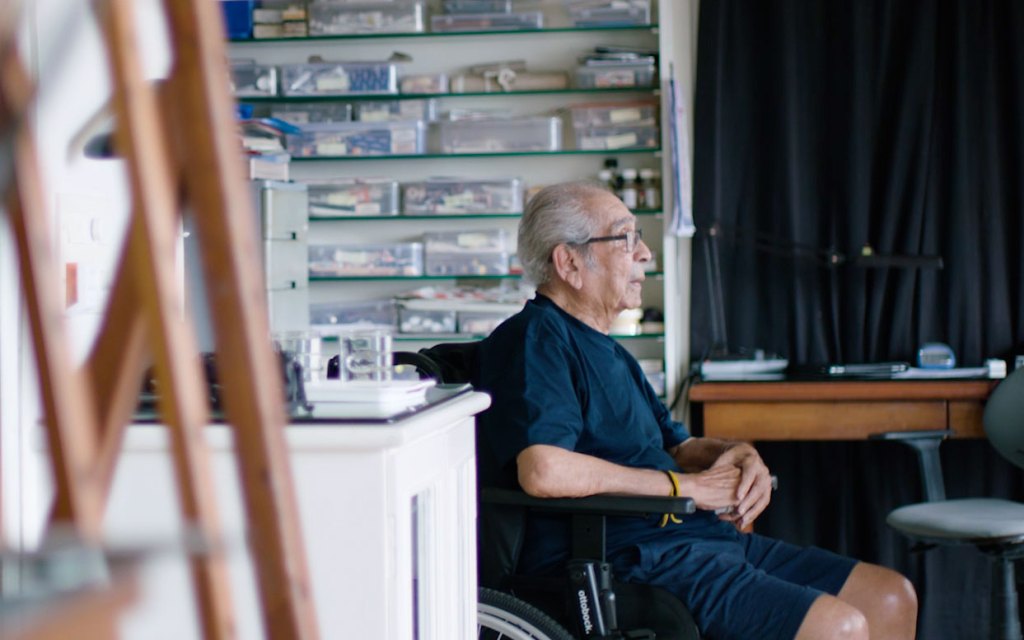[ad_1]
Akbar Padamsee, a prolific artist whose oeuvre encompasses painting, photography, sculpture, and film, died on January 6, the Times of India reported. He died of natural causes at 91.
Padamsee was a key figure in the development of modernism in his home country following the 1947 “Partition of India,” which established India and Pakistan as self-governing nations. As a member of the Bombay Progressive Artists’ Group, which included prominent artists like F. N. Souza, Manishi Dey, and S. H. Raza, Padamsee championed a fusion of Indian history and Western movements such as Fauvism, Cubism, and Expressionism. Though he didn’t identify himself as a modernist, he drew on European avant-garde styles, creating Cubism-influenced paintings and abstractions.
Padamsee was born in 1928 to an affluent family from the region of Gujarat, a state on the western coast of India. He displayed an interest in art at a young age, receiving lessons in watercolor painting during high school and later studying fine art at the Sir J. J. School of Art, the oldest art institution in Mumbai. By the time he graduated, in 1951, he had become a member of the newly formed Progressive Artists’ Group and was pushing back against the style pioneered by the Bengal School of Art, which had brought together folk styles and Hindu imagery to help create a sense of Indian nationalism.
The artist moved to Paris after graduation, and international recognition soon followed. In 1952 he was awarded a prize by André Breton, a French critic who was popular among the Surrealists, on behalf of the city’s Journale d’art. His first-ever solo show, at the Galerie Saint Placide, was held a year later. He was featured in the 1959 Tokyo Biennale, and received the Lalit Kala Akademi Fellowship, one of the highest honors given by the Indian government, in 1962. A fellowship by the Rockefeller Foundation in New York followed in 1965, and in 1969 he received a prestigious Jawaharlal Nehru Fellowship.
His figurative works from the 1950s gave way to bronze heads—the human expression was a lifelong preoccupation of Padamsee—to photography. Exhibitions have been held at institutions worldwide, including at the Rubin Museum of Art in New York and London’s Royal Academy of Art.
Rooftops, a colossal 1959 landscape created during a period he painted in only shades of grey, was sold for $912,500 in 2018 at Christie’s in New York; prior sales have surpassed $1 million.
“Akbar Padamsee always approached his art with deep thought and intense focus, constantly pushing boundaries and innovating in his creative process,” said Nishad Avari, head of South Asian modern and contemporary art at Christie’s. “At the age of 12, he was reading Freud’s lectures on psychoanalyses, and at 90, when we last met, he continued to read, study, and paint tirelessly.”
Padamsee was interviewed by the auction house around the time of the sale of Rooftops. During the studio visit, he was asked to describe his artistic philosophy. “Art for me is to express the invisible,” he replied. “No morality, no values, no hierarchy can enter its field.”
[ad_2]
Source link

